Designing for the Contemporary Custom Home
Timeless Appeal: Hand-Cast Bronze Hardware
The selection of door and cabinet hardware can serve as a consistent design element that ties different parts of the home together. This is an especially important consideration with today’s open plans. Often such hardware is made of metal, which is strong and durable and can take on a variety of styles and finishes.
Bronze is an alloy of copper and tin; it is made by melting the two metals together and then pouring the molten material into molds. The resulting alloy is extremely durable and corrosion resistant.
Bronze was first created by human hands as early as 5000 BC. Over the millennia, it has been used for everything from coins, tools, and weapons to bowls, figurines, and fittings.
Today, bronze still has many applications, including the creation of versatile and durable hardware for custom homes. Truly a timeless material, bronze can be molded into a range of shapes, from simple to intricate, and is well-suited to contemporary, modern, and transitional styles. Bronze hardware adds an organic element to modern designs and is a classic complement to wood.
Highly skilled artisans draw on time-honored traditions to handcraft hardware and accessories for contemporary homes. However, these hardware products also benefit from digital technology. Computer numeric control (CNC) machines are used to fabricate lock mechanisms and other components. Locksets may look like art pieces from the outside, but they can house digital “smart locks” that can be opened using a digital code or voice control and/or controlled by a smartphone. At least one high-end manufacturer also offers extensive custom capabilities, with master craftsmen on staff who can create original patterns and 3-D modeling software that enables the user to perfectly match the finish and style with the materials of the door or other substrate.
Such products are inherently durable not only because of the raw materials used but also the care and craftsmanship that go into making them.
Custom Homes and Biophilic Design
Increasingly, the contemporary custom home is designed to connect occupants to the natural world. This connection is inherent to our well-being and health. Cycles of daylight and darkness, for example, help “tune” the body’s natural rhythms and affect several physiological processes, from sleep to digestion.
Biophilic design is a design approach in which architectural elements reflect people’s innate connection to nature. Biophilic design can be demonstrated through the use of natural materials, such as wood and metal; organic shapes, colors, and patterns; and through features that connect building occupants with outside views, sunlight, and fresh air.
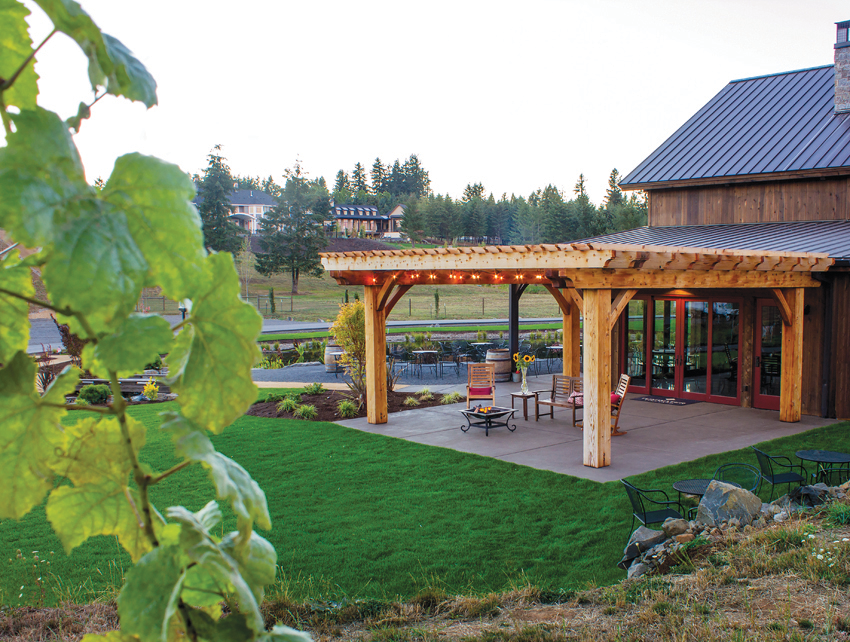
Photo: T.S. Whalen
An outdoor room, protected by a structure made with redwood, encourages people to spend more time outside.
The Natural Warmth of Wood
Wood is obviously a natural material. The colors, textures, grain patterns, and even the way it feels to the touch helps connect people to the trees and forests from which the lumber was sourced.
Redwood adds a timeless warmth to custom homes, and can help provide balance to the crisp lines and neutral palette exemplified in many contemporary homes. Wood is frequently used as an accent to bring warmth and natural beauty to the interior in the form of nonstructural beams, tongue-and-groove ceilings, wainscoting, flooring, cabinetry, and other nonstructural elements.
Redwood can also be used to create outdoor rooms, decks, and railings, and other elements, that invite people to step outside and reclaim their relationship with the natural world.
Finally, wood is extremely versatile and a natural complement to many other materials, from stone and metal to fabric and glass.
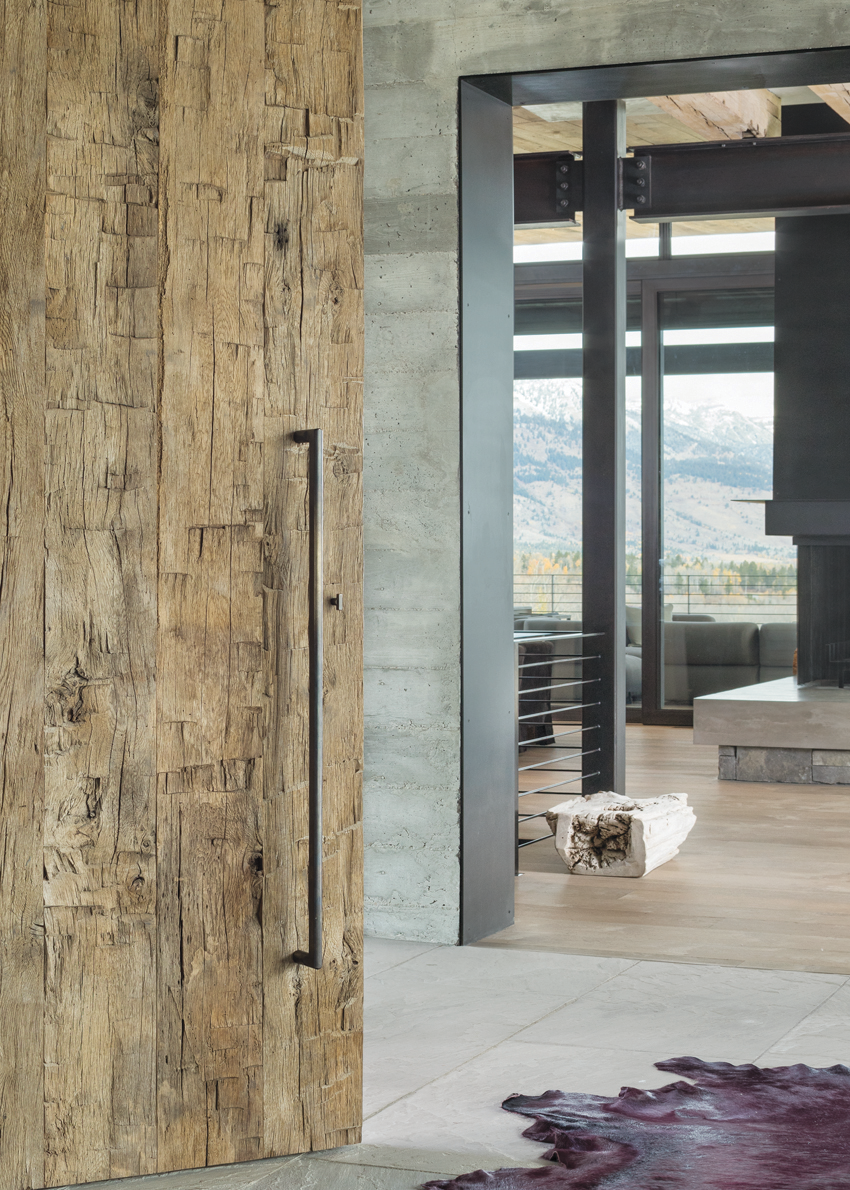
Photo courtesy of Rocky Mountain Hardware
A properly scaled hand-cast bronze handle pairs with this weathered-wood entry door to make a strong statement about connecting with the natural world.
Hand-Cast Metal and the Human Connection
We live in a time of increasing automation, where it is hard to see the connection between human hands and most manufactured products. Bringing hand-crafted elements into a custom home reminds us of the timeless relationship between humans and our precious natural resources.
Hand-cast bronze hardware adds a sophisticated but humane element to a contemporary custom home. These pieces are made using ancient techniques and raw materials mined from the earth. Biophilic designs can take the form of shapes, colors, and patterns inspired by nature. Some manufacturers offer collections that have a deliberately organic aesthetic: rounded edges, earth-toned finishes, and naturalistic shapes. These forms not only appeal to us on a deep level but also feel good to the touch. In addition, bronze hardware is a natural complement to other biophilic materials and shapes, whether crisply painted cabinetry or a reclaimed wood entry door.
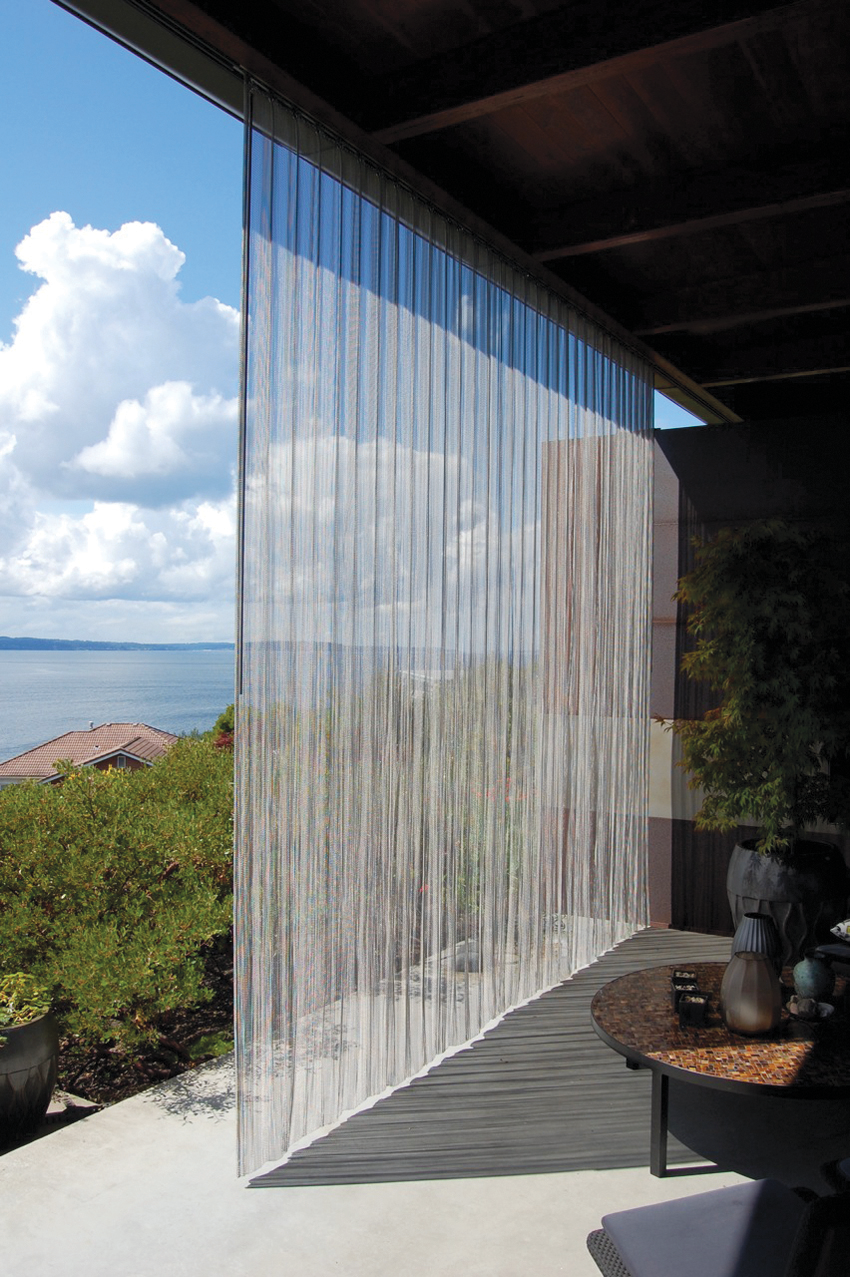
Photo courtesy of Cascade Architectural
Coiled wire fabric connects occupants with views and fresh air while controlling glare and solar gain.
Facilitating the Indoor-Outdoor Connection
Custom home clients often request generous windows, especially for framing views of natural features such as mountains. Architects and designers are also increasingly recognizing the value of daylighting and carefully balancing the desire for glazing with energy-efficiency goals.
Coiled metal drapery, which is made from a weave of stainless steel, facilitates the indoor-outdoor connection in several ways. The panels can be used to control solar gain and glare and modulate daylighting; in this way, sunlight is filtered and diffused into spaces and views are preserved. Because the panels are retractable, they can be adjusted throughout the day as light conditions change.
People often gravitate to windows or outdoor rooms and patios; however, these spaces can be uncomfortable if they are not protected from extreme temperatures, glare, and wind. Depending on the gauge and thickness of the wire, coiled wire fabric panels can be used on the exterior to mitigate sun, wind, wind-borne debris, and insects, thus creating a more comfortable outdoor environment that encourages people to stay outside longer.
Finally, coiled metal drapery is visually versatile. The fullness, gauge, and thickness of the wire can be adjusted to create everything from rigid architectural panels to billowy, transparent drapes. The repetitive pattern of the weave itself suggests a natural pattern or process, such as the cellular structure of beehives. The panels can be finished with a wide range of colors and effects if a more naturalistic effect is desired.
Notice
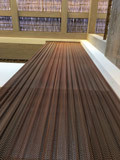
www.cascade-architectural.com
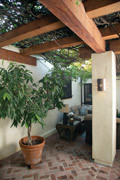
www.getredwood.com

www.rockymountainhardware.com









